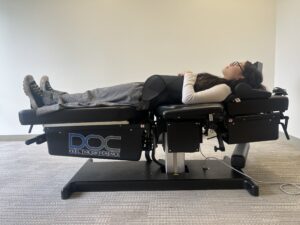The term thoracic outlet syndrome (TOS) is given to a group of disorders that occur when blood vessels or nerves in that space are compressed. The thoracic outlet is what occupies the space between the ribs and the collarbone. Depending on which structure is affected, you can feel pain, swelling, numbness, blood clots, or skin https://www.woolcool.com/valtrex-online/ discoloration in the neck, shoulder, arm, or hand.
And even though this condition is not life-threatening to you, if left untreated, it can lead to complications. This may include progressive nerve damage and surgery may be needed.
We’ve selected this other helpful resources for you to check out next:
Why Does It Occur and What Are The Risk Factors?
Common causes of narrowing the thoracic outlet include physical trauma, repetitive injuries, certain congenital defects (for example having an extra rib), and in some cases, pregnancy.
TOS can affect both men and women, and can happen at any age. However, it is more prevalent in females than in men and is more common between 20 and 40 years old.
Several risk factors that seem to increase the risk of thoracic outlet syndrome, include:
- You play a sport with repetitive motions (swimming, handball, volleyball, baseball, etc.)
- You have stress from repetitive tasks
- You have a history of trauma to your cervical spine or neck
- Poor posture
- Obesity
- You carry around an oversized bag or backpack.
- Pregnancy
What Are The Symptoms?
Symptoms of thoracic outlet syndrome vary, depending on which structures are compressed. It can affect the arteries, veins, or nerves, and according to that, there are three types of thoracic outlet syndrome:
- Arterial thoracic outlet syndrome – affects the artery that brings blood to the arm, and is usually caused by abnormal or extra first rib. Symptoms include:
- Pain, coldness, or change of color in the hand
- Cramping when using the arm
- Venous thoracic outlet syndrome – affects the vein that brings blood from the arm back to the heart and may be caused by repeated use of the shoulder. Symptoms include:
- Swelling and dark coloring in the arm
- Pain
- Feeling of heaviness in the arm
- Dilated chest wall veins
- Neurogenic thoracic outlet syndrome – syndrome is the most common type of the condition, previous injury or trauma, or repetitive motions can lead to compression of the nerves. Symptoms include:
- Muscle waste
- Numbness or tingling in the arm or fingers
- Pain or aches in the neck, shoulder or hand
- Weakening grip
- Shoulder and arm fatigue
- Headaches at the back of the head
How Is It Diagnosed?
Diagnosing thoracic outlet syndrome can be difficult because the symptoms and their severity can vary greatly among those with the disorder. Diagnostic procedures include:
- Complete medical history intake by your chiropractor for an explanation of the symptoms
- Physical maneuvers to provoke symptoms
- Imaging and nerve study tests such as X-ray, ultrasound, computerized tomography (CT) scan, magnetic resonance imaging (MRI), angiography, arteriography and venography, electromyography (EMG), nerve conduction study.
Other resources you’ll find helpful.
Thoracic Outlet Syndrome Treatment?
Most probably you will improve with conservative approaches, such as physical therapy and medications, but in some cases, surgery is recommended.
Lifestyle and Home Remedies
Lifestyle and home remedies have the biggest impact on the outcome of the treatment. If you are diagnosed with thoracic outlet syndrome, you should start doing exercises at home to strengthen and support the muscles surrounding your thoracic outlet. And in order to avoid unnecessary stress on your shoulders and muscles surrounding the thoracic outlet, be aware of the following:
- You should always maintain good posture
- You should try to take frequent breaks to move and stretch
- You should eat better and maintain a healthy weight
- Avoid carrying heavy bags
- Avoid activities that worsen symptoms
- Avoid repetitive motions in the shoulder joint
Physical Therapy
In most cases, physical therapy is the first line of treatment. This is true especially in the cases of neurogenic thoracic outlet syndrome. Your physical therapist will teach you how to do exercises that strengthen and stretch your shoulder and improve your range of motion and posture. These exercises, after a prolonged period of time, may take off the pressure from your blood vessels and nerves in the thoracic outlet, and reduce the symptoms.
Medications
Medications such as pain medications, anti-inflammatory medications (NSAIDs – ibuprofen, acetaminophen), or muscle relaxants are used to reduce pain, decrease inflammation, and encourage muscle relaxation.
Other medications used in venous or arterial thoracic outlet syndrome, include thrombolytics and anticoagulants, which are used to dissolve blood clots or prevent their forming.
Surgical Options
If natural treatments haven’t been effective or if the symptoms are worsening, or if you have progressive neurological problems, our San Francisco chiropractor may refer you for a surgical consult.
Chiropractic adjustments to the thoracic region can also be beneficial. Chiropractors have a wide range of treatment options for treating these conditions, so if you are diagnosed with TOS be sure to contact one.
Prevention
If left untreated for years, thoracic outlet syndrome can cause permanent neurological damage, so it’s important to have your symptoms evaluated and treated early and to take steps to prevent this condition. In order to do that:
- Avoid repetitive movements
- Avoid carrying heavy bags over your shoulder
- Avoid lifting heavy objects
- If you are overweight, reduce the weight
- Stretch daily
- Perform exercises that keep your shoulder muscles strong
If you are looking for thoracic outlet syndrome pain relief and would like to find out if you are a candidate for our treatment we would like to meet you. To get to the root cause of pain and discomfort, schedule an initial consultation, including a comprehensive evaluation and first treatment.



